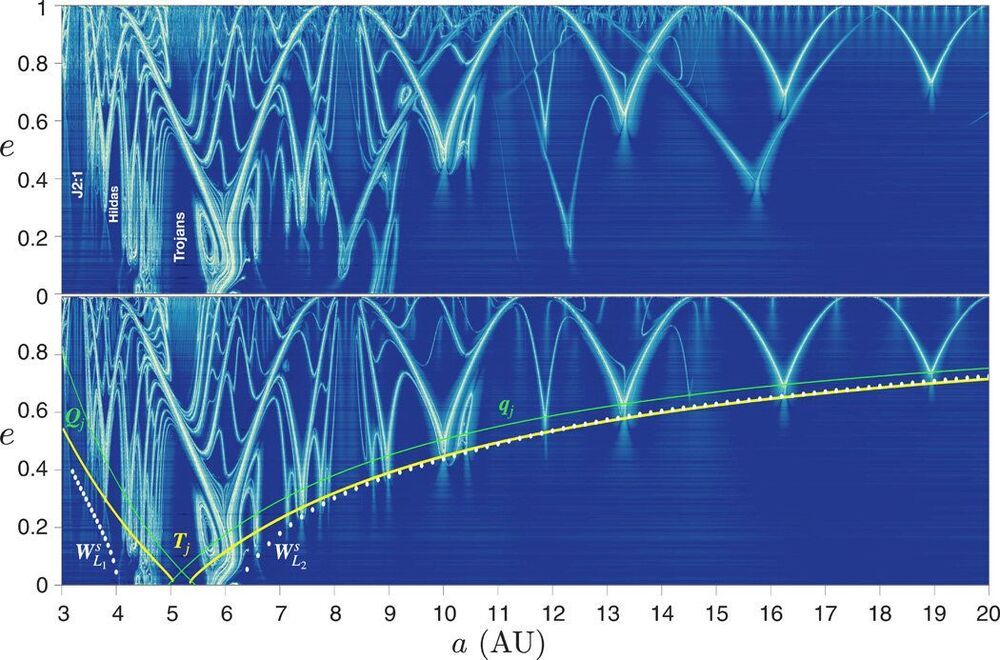Space manifolds form the boundaries of dynamic channels to provide fast transport to the innermost and outermost reaches of the solar system. Such features are an important element in spacecraft navigation and mission design, providing a window to the apparently erratic nature of comets and their trajectories. In a new report now published on Science Advances, Nataša Todorović and a team of researchers in Serbia and the U.S. revealed a notable and unexpected ornamental structure of manifolds in the solar system. This architecture was connected in a series of arches spreading from the asteroid belt to Uranus and beyond. The strongest manifolds were found linked to Jupiter with profound control on small bodies across a wide and previously unknown range of three-body energies. The orbits of these manifolds encountered Jupiter on rapid time-scales to transform into collisional or escaping trajectories to reach Neptune’s distance merely within a decade. In this way, much like a celestial highway, all planets generate similar manifolds across the solar system for fast transport throughout.
Navigating chaos in the solar system
In this work, Todorović et al. used fast Lyapunov indicator (FLI); a dynamic quantity used to detect chaos, to detect the presence and global structure of space manifolds. They captured the instabilities acting on orbital time scales with the sensitive and well-established numerical tool to define regions of fast transport in the solar system. Chaos in the solar system is inextricably linked to the stability or instability of manifolds forming intricate structures whose mutual interaction can enable chaotic transport. The general properties can be described relative to the planar, circular and restricted three-body problem (PCR3BP) approximating the motion of natural and artificial celestial bodies. While this concept is far from being fully understood, modern geometric insights have revolutionized spacecraft design trajectories and helped build new space-based astronomical observatories to transform our understanding of the cosmos.
